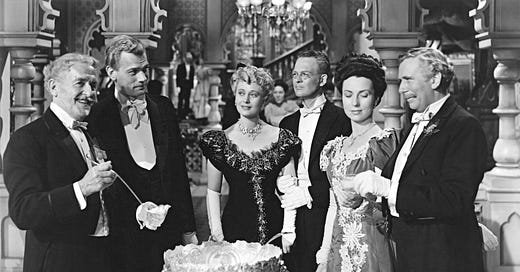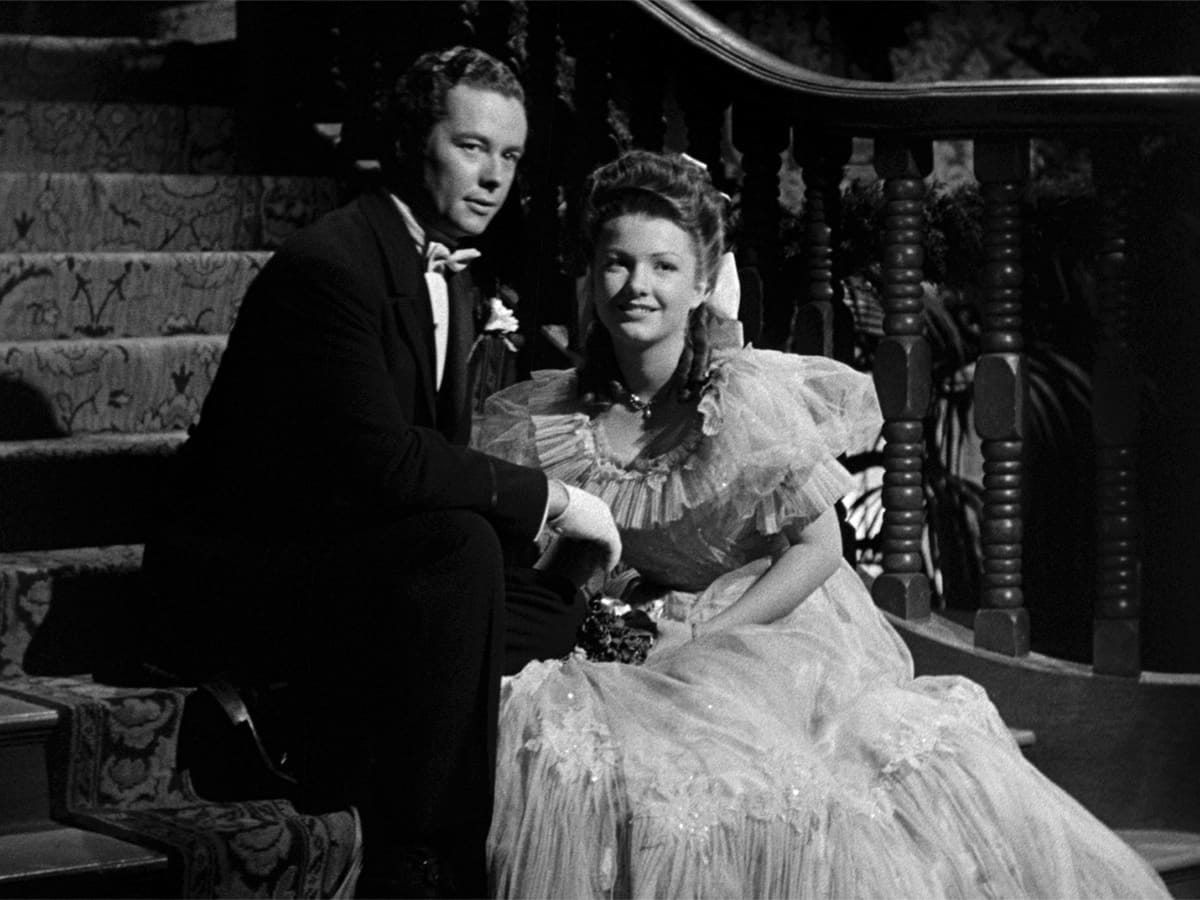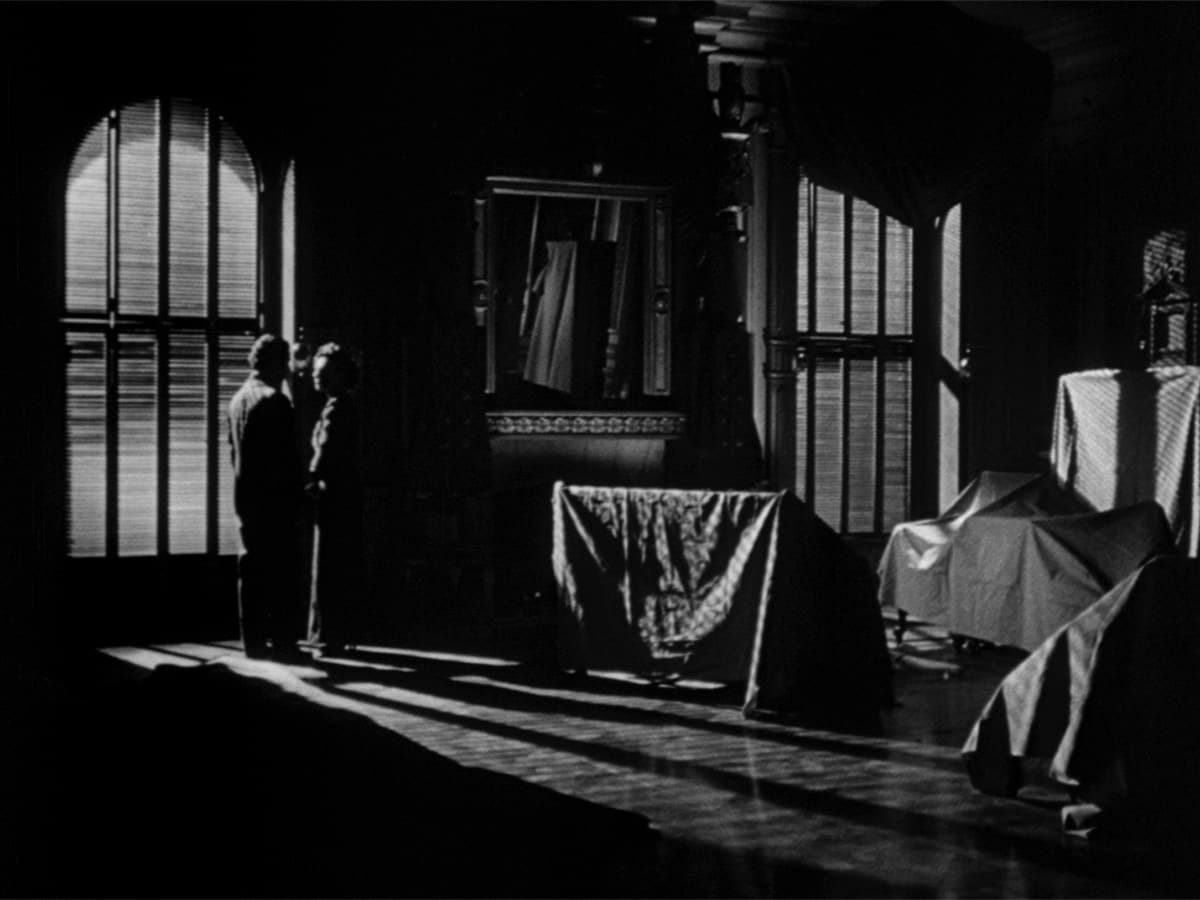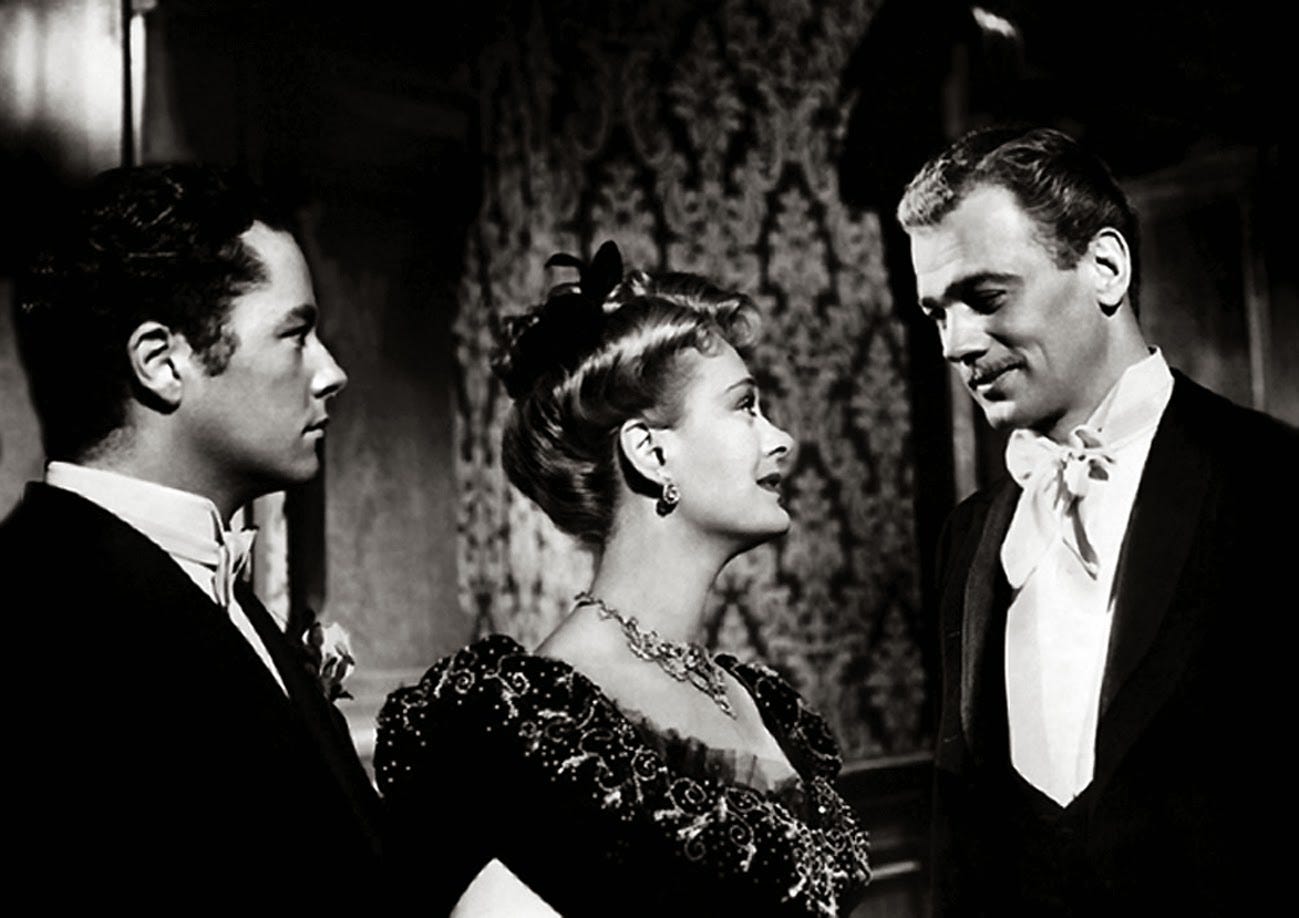The Magnificent Ambersons (1942)
8/10
After enduring the 202-minute hell of Jeanne Dielman, 23 quai du Commerce, 1080 Bruxelles, a film that seems to actively hate its audience, it was refreshing to watch a movie critics have ranked among the “greatest films of all time” that doesn’t suck.
The Magnificent Ambersons is a critically acclaimed film that’s both enjoyable and engaging thanks in no small part to its screenwriter and director, Orson Welles, who adapted the story from Booth Tarkington’s Pulitzer-Prize-winning novel. As he did with Citizen Kane, a legitimate masterpiece that earns its position at the top of critics’ lists of greatest films, The Magnificent Ambersons shows off Welles’ dazzling and innovative cinematic technique; his clever, incisive dialogue and ability to draw great performances out of his actors. If there are weaknesses to the film, these are largely the fault of meddling by studio executives, who cut nearly an hour out and changed its ending against Welles’ wishes.
Frankly, it’s amazing the film offers such sweep and holds together as well as it does, despite the studio hacking Welles’ work to bits. The film tell the story of the patrician Ambersons, the wealthiest family in a fictionalized Indianapolis at the turn of the century, and portrays their declining fortunes amid the rise of industrial capitalism, in particular the automobile industry. As a young man, Eugene Morgan (Joseph Cotten) courts Isabel Amberson (Dolores Costello), who spurns him after he embarrasses her. Isabel instead chooses to marry a man she does not love, Wilbur Minafer (Don Dillaway). She spoils their only son, George (played as an adult by Tim Holt). Decades later, Eugene returns with his daughter Lucy (Anne Baxter), whom George falls for while despising her father as a social climber. Eugene, an early proponent of the “horseless carriage”, amasses wealth in the automobile industry but still harbours feelings for Isabel, to George’s consternation.
While much of the drama revolves around personal friction between the characters, the overriding conflict of The Magnificent Ambersons is that between the “old-money” Ambersons and the nouveau riche such as Eugene Morgan who gained their money through modern industry and business. Historically, the United States was different from Europe in that it did not have a formal nobility. Families such as the Ambersons could trace their presence to the earliest years of colonization and contrasted their inherited wealth to that of the rising class of industrialists.
In writing his 1918 novel, Booth Tarkington drew inspiration from his own family. The Tarkingtons were a wealthy patrician family in Indianapolis, who lost much of their wealth after the Panic of 1873. Though relatively obscure today, in the 1910s and 1920s Tarkington was widely considered America’s greatest living author. He was a Midwestern regionalist, with much of his work set in his native Indiana. Tarkington has been described as an anti-modernist, and his aversion to the automobile—critical of the pollution it spewed—found a mirror in George Amberson Minafer.
Seeing how Isabel spoils George from his earliest years, many Indianapolis townsfolk hope the boy will one day receive his “comeuppance”. While again, there was no formal aristocracy in the United States, as a young man George embodies the uselessness of the late feudal nobility that led to its destruction in the great bourgeois revolutions, the classical example being the French Revolution. George drips with pride, arrogance and condescension to those he considers beneath him while contributing nothing to society. He attends college, but tells Lucy that all he’s studying is “lots of useless guff.” He has no career ambitions. All he really wants, he says, is to be a yachtsman.
George is equally dismissive of new technology, specifically the automobile. Early on, he and Lucy are engaging in a horse-drawn sleigh ride together and pass Eugene struggling to start an early “horseless carriage” stuck in the snow. “Get a horse!” George yells, right as his sleigh wipes out and his horse runs off. In order to get home, he has to help push Eugene’s car, coughing as exhaust spews into his face. Later, as George continues to court Lucy, Eugene amasses a fortune mass-producing cars. After Lucy rejects George’s marriage proposal, George blames Eugene and erupts in a tirade against the automobile when the Ambersons invite Eugene to dinner. “Automobiles are a useless nuisance,” he says, adding, “They had no business to be invented.”
But you can’t put the toothpaste back in the tube. The facts of technological development don’t care about George’s feelings; his yearning to return to a lost, idealized past is the hallmark of reactionaries. Eugene offers a diplomatic response:
I'm not sure George is wrong about automobiles. With all their speed forward they may be a step backward in civilization. May be that they won't add to the beauty of the world or the life of men's souls, I'm not sure. But automobiles have come and almost all outward things will be different because of what they bring. They're going to alter war and they're going to alter peace. And I think men's minds are going to be changed in subtle ways because of automobiles. And it may be that George is right. May be that in 10 to 20 years from now, that if we can see the inward change in men by that time, I shouldn't be able to defend the gasoline engine, but agree with George—that automobiles had no business to be invented.
Despite Eugene’s friendly overtures, George remains hostile to the other man and everything he represents—not only Eugene’s love for his mother, but to the automobile and industry. One could draw a comparison to the struggle between the growing industrial capitalist class concentrated in the Northern United States and the aristocratic slave-owning class in the South which precipitated the U.S. Civil War. The southern slaveowners, too, resented the threat that capitalist development and wage-labour posed to their traditional “way of life”.
Just as the Southern slaveowning class was doomed, so too is George’s “way of life” as the Ambersons gradually loses their money in bad investments. Eventually, the young patrician is faced with the ultimate horror: having to get a job and work for a living. It should be said that while The Magnificent Ambersons contrasts the aristocrat to the capitalist, in truth neither class produces value through labour. At the time the automobile came into prominence in the 1910s, capitalism was already a system that had outlived its historical usefulness and became a hindrance to humanity’s development. The contrast between an aristocrat and a capitalist might have been more effective if the story were set in France in the 1780s.
To be fair, that’s not the setting of the novel Welles was hired to adapt. Moreover, portraying the “hard-working” capitalist is a message Hollywood can get behind. Eugene Morgan in this film both helps invent the automobile and becomes rich by producing them. In this way, The Magnificent Ambersons helps promote capitalist mythology and the idea of the American Dream: Eugene becomes wealthy because he is creative and savvy enough to invest in the automobile early on.
Putting aside its social, political and economic context, The Magnificent Ambersons is an incredibly well-made film, as one would expect from Welles. His artfully composed shots, imaginative camera placement, and dynamic use of light and shadow mean the film is always visually interesting. Welles provides the narration and his rich baritone is a delight to hear as it augments what we’re seeing onscreen. As a director, he is also skilled in helping his actors rise to the occasion.
Agnes Moorehead received an Oscar nomination for Best Supporting Actress in the role of Aunt Fanny—one of her first film performances, no less. But it’s Cotten, Costello and Holt who represent the heart of the film. The expression on Holt’s face after George realizes Eugene and Isabel’s love for each other is a highlight. For the first time, this arrogant, spoiled character displays some measure of reflectiveness and uncertainty, a shift you can see in Holt’s eyes.
The biggest problem with The Magnificent Ambersons—other than the limitations imposed on all Hollywood films of this era by the Hays Code—is its ending, the result of studio changes and cuts against Welles’ objections. The last 15 minutes or so feel rushed. But it’s the final scene in particular that reeks of studio interference and violates the classic storytelling rule of “show, don’t tell”. Welles said his original ending was much darker, and it’s a shame the studio interfered with the vision of a great filmmaker in favour of a more bland, “happier” ending. Sadly, it seems we’ll never see the original version of The Magnificent Ambersons because the studio destroyed the negatives to clear vault space.
If the film itself arguably presents too flattering a view of capitalists, the destruction of Welles’ art by the capitalists who owned the negatives reveals a shortsightedness similar to that of George Amberson Minafur. Like the Ambersons, capitalists are becoming an anachronism fated for the dustbin of history.








